#charles ii de bourbon
Explore tagged Tumblr posts
Text

The first kings of the Valois dynasty.
#royaume de france#maison de valois#Philippe vi de valois#jean ii le bon#charles v le sage#charles vi#roi de france#vive le roi#jeanne de bourgogne#jeanne de boulogne#jeanne de bourbon#isabeau de baviere#reine de france#vive la reine#kingdom of france#house of valois#engraving#engravings
4 notes
·
View notes
Text
youtube
#history#royal history#lindsay holiday#philippe I duke of orleans#queer#queer history#philippe de lorraine#henriette anna of england#louis xiv#armand de gramont#elizabeth charlotte of the palatinate#anne lennard#armand charles de la porte de la meilleraye#charles II#aphra behn#her history#henry of prussia#blainville#count la roche laymon#christian ludwig von kaphengst#frederick II#isabella of bourbon-parma#joseph II#maria christina of teschen#ludwig viktor of austria#luisa isabel alvarez de toledo#leoncio gonzalez de gregorio#liliana maria dahlmann#ivar mountbatten#mavendra singh gohil
2 notes
·
View notes
Text


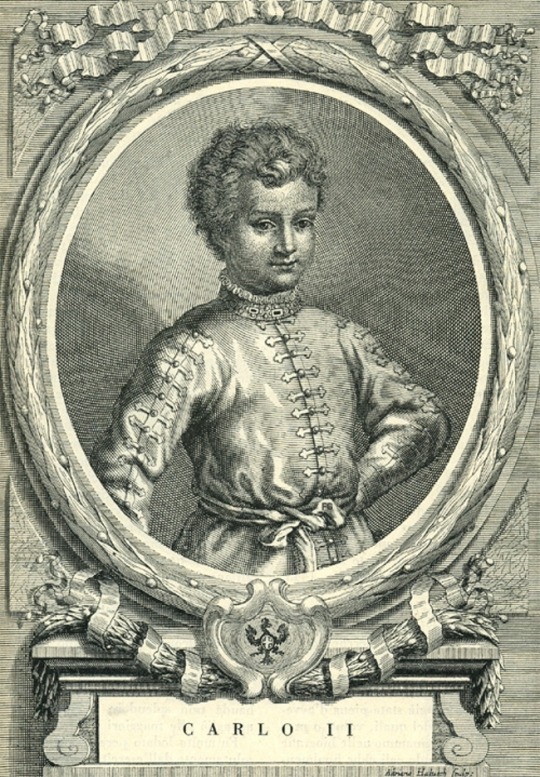
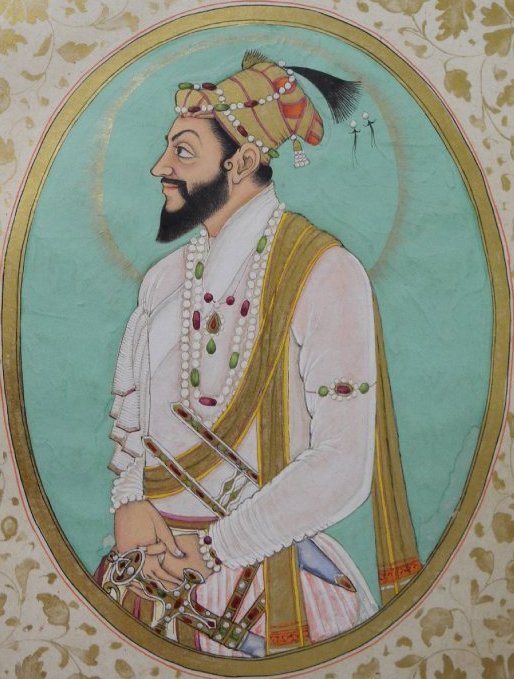
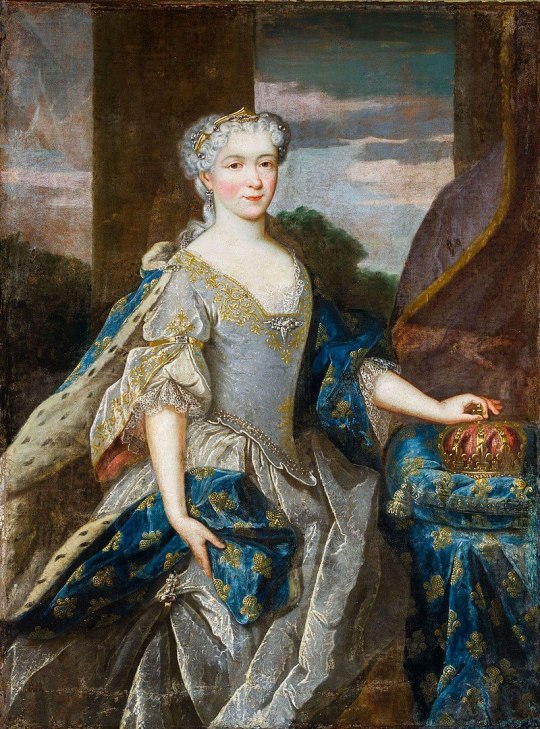
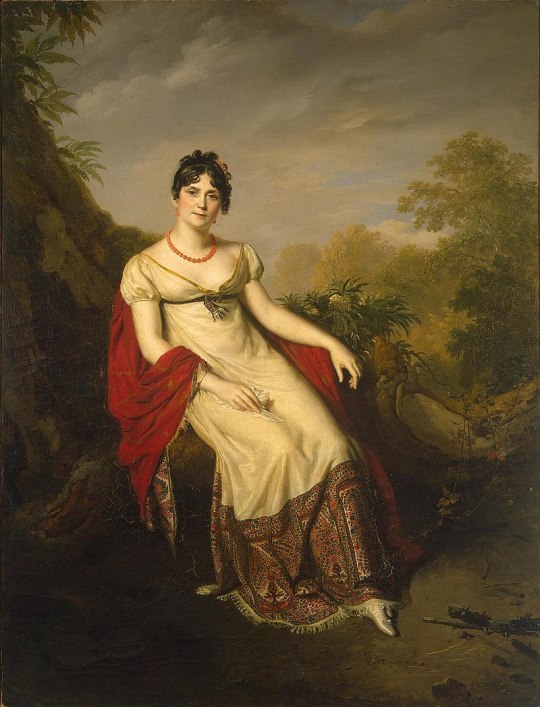




Royal Birthdays for today, June 23rd:
Ptolemy XV Philopator Philometor Caesar, Pharaoh of Egypt, 47 B.C.
Margaret of Denmark, Queen of Scotland, 1456
Charles II, Duke of Savoy, 1489
Shah Shuja, Mughal Prince, 1616
Marie Leszczyńska, Queen of France, 1703
Joséphine de Beauharnais, Empress of the French, 1763
Edward VIII, King of the United Kingdom, 1894
Tribhuhvan Bir Bikram Shah, King of Nepal, 1906
Maria Carolina of Bourbon-Parma, Marchioness of Sala, 1974
Maria-Carolina of Bourbon-Two Sicilies, Duchess of Palermo, 2003
#caesarion#marie leszczynska#josephine de beauharnais#margaret of denmark#Maria-Carolina of Bourbon-Two Sicilies#Maria Carolina of Bourbon-Parma#edward viii#shah shuja#charles ii#Tribhuhvan Bir Bikram Shah#royal birthdays#long live the queue
15 notes
·
View notes
Text
The Consequences of the Massacre of Wassy
Commerative plaque to the Massacre at Wassy (Photo credit: Ji-Elle from Wikimedia Commons) French history has been a favorite of mine since college days when the designated professor was eccentric and gave fascinating lectures. Those are fond memories. Recently, my reading list has included lots of French history, especially the sixteenth century and the Renaissance era. A certain incident in…

View On WordPress
#Antoinette de Bourbon#Catherine de’Medici#Charles IX#Duke of Guise#Elizabeth I#Francis II#French Catholics#French history#French Reformation#French Wars of Religion#King of France#Mary Queen of Scots#Mary Stuart#Massacre of Wassy#Protestants#Queen of England#Queen of France#Queen of Scotland#Renaissance#Stuart history#Tudor history#Wassy
2 notes
·
View notes
Text
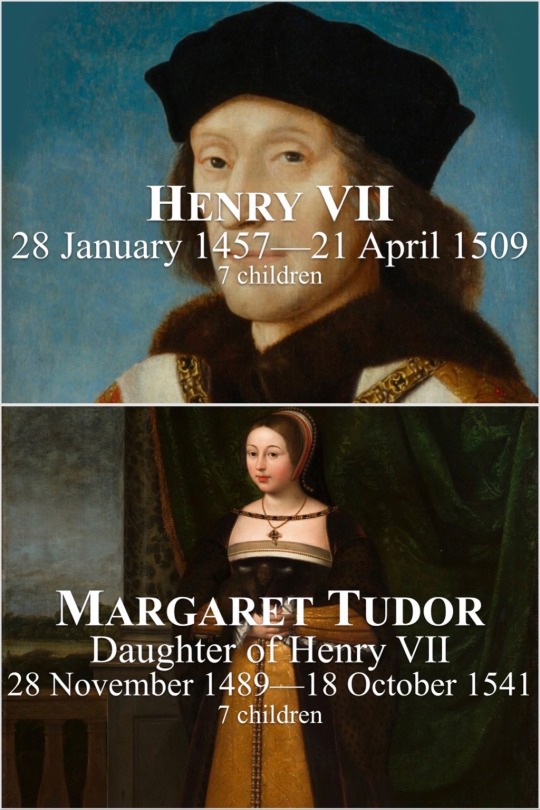




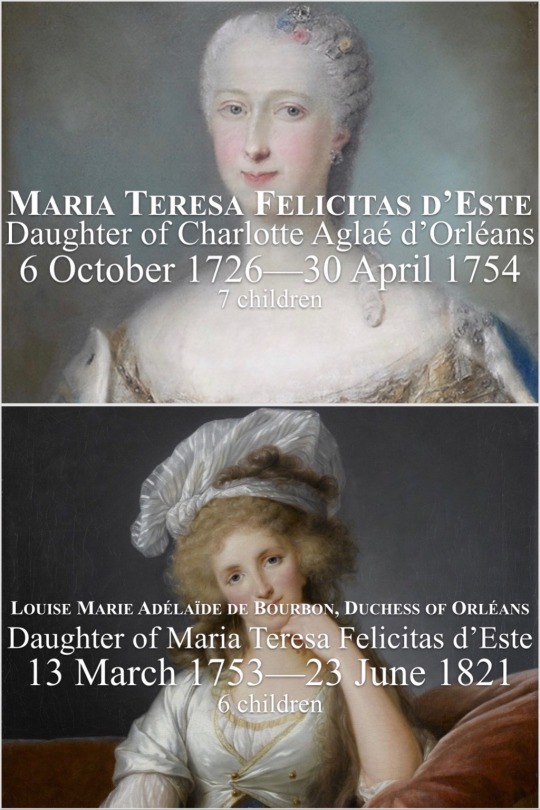
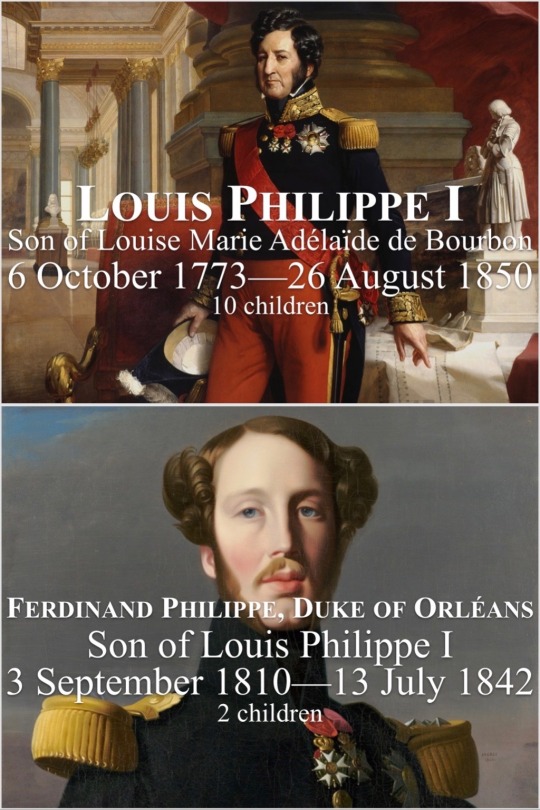
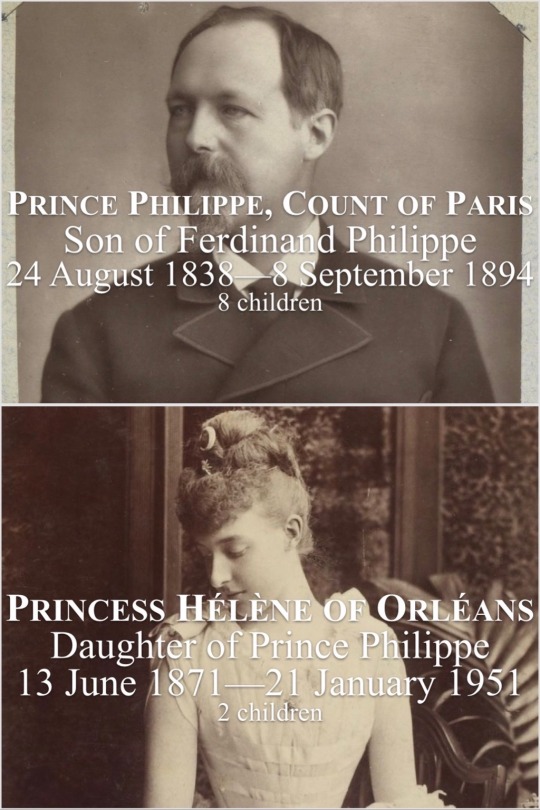
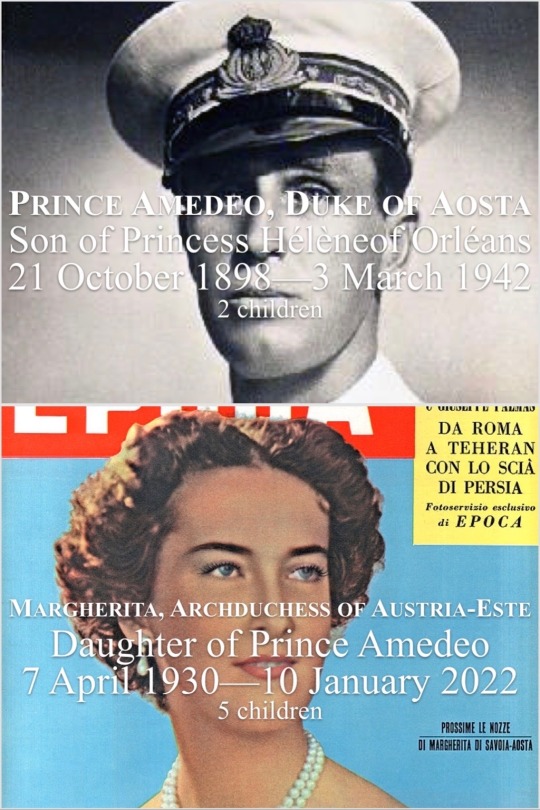
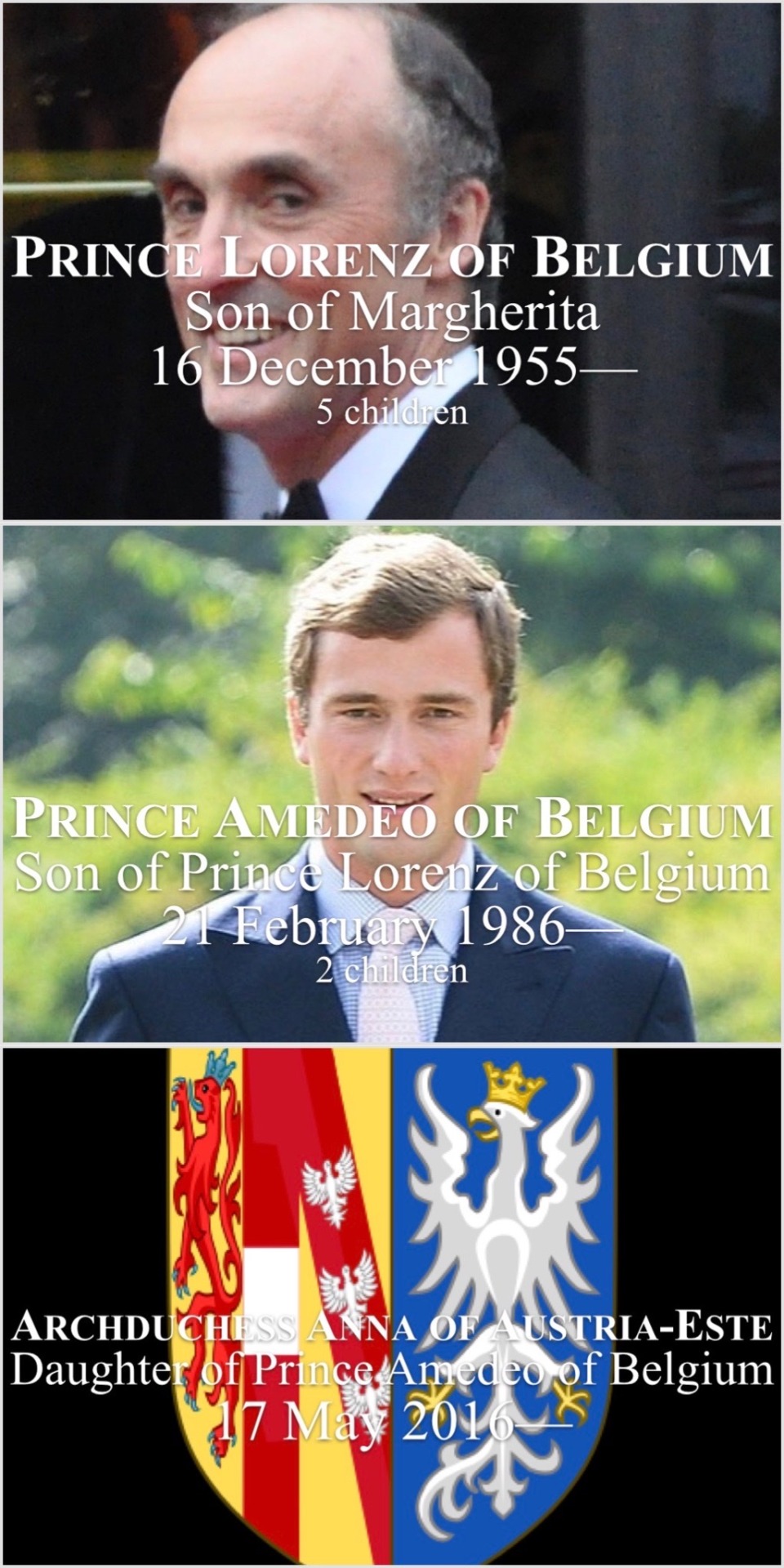
Descendants of the Tudors
#descendants of the tudors#henry vii#margaret tudor#james v#mary queen of scots#james vi and i#elizabeth stuart#charles i louis#elizabeth charlotte madame palatine#philippe ii duke of orléans#charlotte aglaé d’orléans#maria teresa felicitas d’este#louise marie adélaïde de bourbon#louis philippe i#ferdinand philippe duke of orléans#prince philippe count of paris#princess hélène of orléans#prince amedeo duke of aosta#margherita archduchess of austria este#prince lorenz#prince amedeo
7 notes
·
View notes
Text
Passive resistance
Condé feared that the king would become the tool of a nonentity or coquette, but it did not enter his head that the monarch could use the crutch of a friendship to realize his own political goals. Marie was even less astute, reportedly devising the strategty of surrounding him with persons of "mediocre capacity and little spirit." Among these was the man who would help Louis overthrow his mother and her favorite.
His name was Charles d'Albert, sieur de Luynes. Stories circulated that Luynes and his two younger brothers shared the same best suit, and that a hare could quickly jump across their family lands. Yet they were of the same lesser nobility that had predominated at the Estates General. Henri IV's friendship for Luynes' father, a soldier of fortune, caused him to place the younger Luynes among the dauphin Louis's noble comrades. The gentilhomme began to look after the heir's birds of prey; and the young boy's fondness for the gentle, handsome, and supportive middle-aged man grew.
By the end of 1614 Louis's attachment was so strong that it bothered Queen Mother Marie, her Italian favorite Concini, and the king's former governor, Souvré. Yet Luynes remained in Louis's favor and his brothers also gained easy access to the king. How did the king prevent a sequel to his mother's earlier banishment of Alexandre de Vendôme? We need follow only one example. In October 1614, Souvré made the Albert brothers stay away from the royal bedchamber, even during the ceremonial lever and coucher, hoping to supplant the gentleman-favorite with his own son, Courtenvaux. Someone told the king that his former governor was responsible, and Louis countered by treating Souvré with silence and dark looks, until the mortified man got the queen mother to negotiate an accommodation.
In employing passive resistance here, Louis had discovered the only way he could assert himself, considering the queen mother's imperiousness and his own timidity. The son also held his ground in refusing to tell his mother who had told him of Souvré's maneuver against Luynes, until she promised not to punish that individual. Equally revealing was the fact that Louis did not bear a grudge against Souvré or Courtenvaux, both of whom he actually liked. He paid for all this agitation with a soaring pulse and symptoms of illness. This powerful combination of indirect strategy, fierce loyalty, forgiveness, and sacrifice of personal health, then, separates the real adolescent Louis XIII from both the weakling and the vindictive Louis of historical fiction and scholarship.
If the court was baffled by the dynamics of Louis's friendships, it was equally unaware that his interests always had a serious element, even when they appeared frivolous. When he sketched with pen and ink, it was of horses pulling cannon, although incongruously placed in a child's setting of trees, churches, and village brides. Louis dutifully took part in court masques and ballets; however, his dislike of elaborate protocol and showing off caused him to refuse outright to lead his sister Elisabeth in a dance before the Spanish ambassador. The Spaniards were disconcerted by this affront so close to the marriages of Louis and Elisabeth to the children of King Philip III of Spain, Anne of Austria and the future Philip IV. The French court poet, Malherbe, could only comment: "If age and love don't change his ways, he will be inquisitive only of things that are solide."
A. Lloyd Moote - Louis XIII the Just
#xvii#a.lloyd moote#louis xiii the just#louis xiii#marie de médicis#charles d'albert de luynes#henri ii de bourbon-condé#concino concini#gilles de souvré#alexandre de vendôme#élisabeth de france#anne d'autriche#philippe iv d'espagne#malherbe
4 notes
·
View notes
Text
Plaza Mayor de Salamanca, comunidad autónoma de Castilla y León, España.
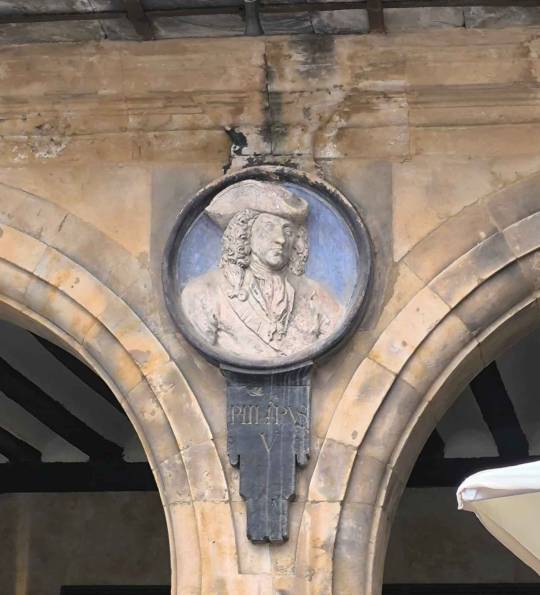
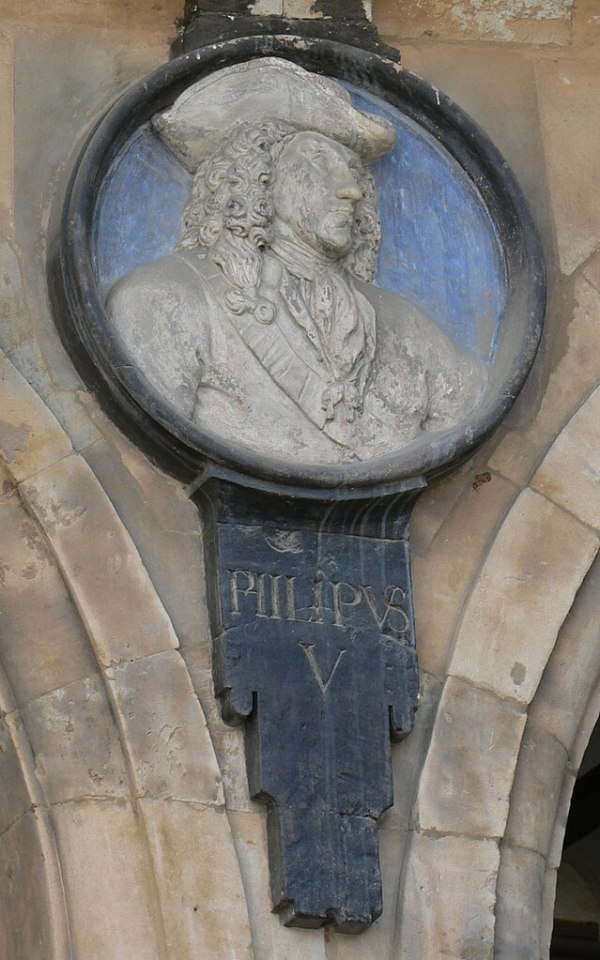




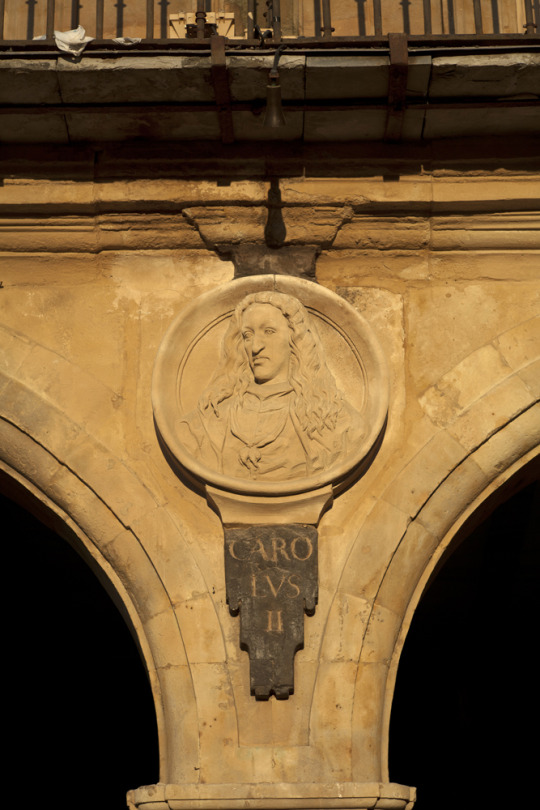
#visual#bourbon#felipe v de españa#philip v of spain#carlos ii de españa#charles ii of spain#habsburg#the first image is the most recent one it was took today by my friend#:3#bourbon-anjou#im not going to post the other stuff of the place as it is a lot and not all of it is of my interest but its cool to check it out
1 note
·
View note
Text

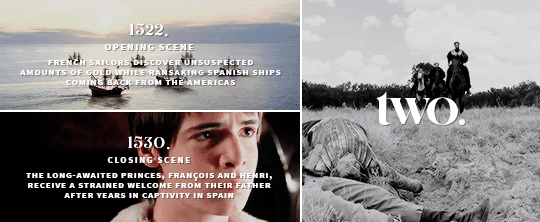

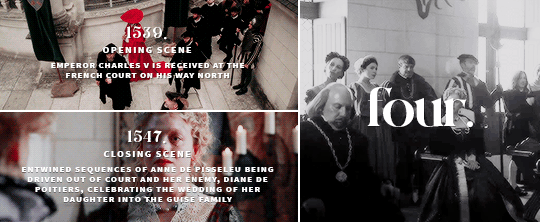
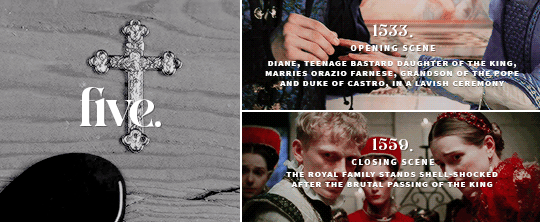
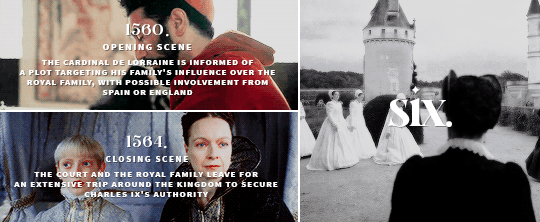

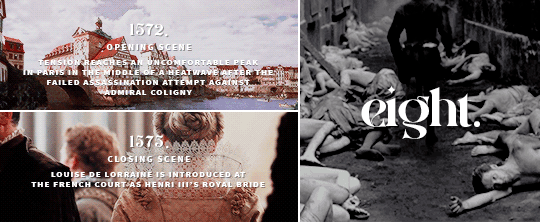
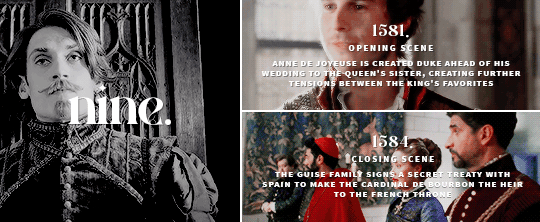


K I N G S I D E, a tale of seven kings
first season 1514-1520. Claude and François finally get married, a vacant seat for Mary Tudor, Louise of Savoy's stubborness to keep her son in check. A new King arises, the New Order, François' quest for glory in Italy. Another crown, another campaign.
second season 1522-1530. The inheritance dispute that leads Bourbon to treason. The pursuit of the italian dream, Claude dies, all is lost in Pavia. Süleyman and the unthinkable alliance, captivity in Spain. The Ottoman fleet. Royal depression. The inheritance dispute that led Bourbon to treason. The ladies' peace, Henry VIII flinching, a price for two princes, a New wife for the King.
third season 1531-1537. Louise dies, tensions between François and Marguerite. The wedding of Catherine and Henri. The rise of Pisseleu, the battle at Court between Charles and Henri and their people. War between Diane and Montmorency. Placards and the anti-heterics frenzy, another war in Italy. Wedding and death of Madeleine.
fourth season 1539-1547. Mending tensions between France and Spain. A very stubborn niece. All eyes on Henri and Catherine's sterile womb. Death of Charles. The duel in Jarnac. The King is dead, long live. Diane de Poitier's absolute triumph over Anne de Pisseleu. The Guises make their move.
fifth season 1553-1559. Diane of France's not so typical royal wedding. Catherine giving birth to the twins, Chenonceau goes to Diane, the cordial hate between the two. Rohan VS Nemours. Montmorency mess and a remarriage for Diane of France. The death of Henri, everything falls down.
sixth season 1560-1564. François II barely hanging on, Catherine's almost giving up, Elisabeth married off, the Guise family's counterpower, Montemorency's political exile, the Amboise conspiracy, preparations for the grand tour.
seventh season 1565-1572. The end of the grand tour, encounter between the royal family and Elisabeth, queen of Spain. The rise of Charles IX, a new queen, Marie Touchet and her bastard boys. Catherine's plans to get a match for Marguerite. Rising tensions between Charles and Henri after Jarnac and Montcontour. Marguerite's nuptials amidst tensions and Coligny's attempted murder.
eighth season 1572-1575. Coligny and the Protestant leaders rallying the troops. The Saint Barthelemew Massacre and the promise of Marguerite to never forgive her family. Catherine finds out Anjou's possible involvement. A new king for Poland. Marguerite's toubled married life. Death of Charles IX. Henri's escape from Poland and slow return to France.
nineth season 1581-1584. Catherine's illusions shatter. New King, no heir. Marguerite returns to Paris. Louise shows some spine against the King's favorites. Quarelling with Anjou, tensions with Elizabethan England, Anjou's election and subsequent death and Catherine's anger. The Guise family veering off the road.
tenth season 1585-1589. The mounting war of the three Henris. All eyes on King Henri who has no sons, Catherine's political exile, the slow burning of the last Valois children. Hunting down Marguerite from stronghold to stronghold, ending with her house arrest in Usson. Assassination of the Guise brothers, the death of Catherine, Henri III breaks down in Diane's arms. Marguerite in exile, Diane the only "true" daughter of Catherine's, as she sets out to (successfully) pacify the kingdom on her own.
#historyedit#perioddramaedit#mine#*#*kingside#16th century#so yeah this took me a whole month instead of a good week#we love crappy laptops
199 notes
·
View notes
Note
hewwo ma amie !! i came as stated cus bourbon - habsburg infodump exchange
I would actually want a presentation about mariana de austria ... im a loser who doesnt know much about her ! i read about her when she got to spain and was confused about spanish (that was so real from her) but i dont know more cool stuff about her at all ... so feel free to tell me anything you find remarkable about her !
who is your favourite bourbon ? :3

Thank you for this Question:
Queen Mariana of Austria is known as the Mother of Charles II of Spain and the niece/wife of Philip IV. She was Queen Regent when her husband Philip IV died and ruled on Carlos II's behalf until he was 14. Like Charles II, Queen Mariana was a victim of the classic “decline of Spain” paradigm. She is defined by 19th-century historians as “weak,” “unstable,” and “ignorant” but also “Machiavellian,” “scheming,” “with a German outlook” (meaning foreign), at times “melancholic” because she suffered from migraines, and was overly pious and uninterested in politics because she “dressed as a nun." She was accused of handing power over to her favorites; Jose Everardo Nithard and Fernando de Valenzuela. In reality, She was smart, strategic, strong, decisive, and seemingly tactile. Her favorites played a dominant role in her regency but her strong and decisive personality and her extensive and consistent participation in all aspects of government suggest otherwise. She faced two political crises during her regency the first was in 1669 resolved by her dismissal of Nithard; the second, between 1675 and 1677, ended with Valenzuela’s fall and her exile. There is evidence in state papers to prove that she did not surrender power to them. Speaking of Jose Everardo Nithard, He was Mariana's tutor, friend, and later her confessor. He was made inquisitor General. As for Valenzuela, Known as the palace elf, due to his influence and connections to people in high places. He married a woman who is part the queens valet. He provided Queen Mariana information about gossip and rumors that were circulating in Madrid. Valenzuela got more influencial overtime which created tension between him and the court. He was Mariana's protégé. Their friendship caused controversy and nasty rumors where made about them as a result. The worst one I believe was the rumor of Queen Mariana sleeping with Valenzuela. The fact that people actually believe that rumor makes me angry. Mariana was dressed as a nun because this is the type of dress worn by Habsburg widows. She made a few changes to the garb like having princely folds and lavish materials. Queen Mariana was exposed to the Spanish cultural traditions because Mariana's mother is Philip IV's sister. She was exposed to Italian culture because of two generations of italian empresses. Mariana both observed and participated in court ballets, rituals, and ceremonies; her dance master, Santo Ventura, was highly regarded. Boys received this kind of instruction as well. Leopold I, for example, was an avid consumer and practitioner of theater and music as emperor. At the age of seven, for example, Mariana publicly greeted her parents on their return from the Diet of Regensburg in 1641 by saluting her mother in the Spanish style and her father in Latin. When the fourteen-year-old performed a similar greeting in Trento, this time as queen of Spain, she had had at least seven years of practice. Queen Mariana was educated and spoke Latin, Spanish and German well. Judging by her education and her fleunt spanish, I doubt she struggled speaking spanish. I read somewhere that Queen Mariana as a child loves playing with dolls. She was cheerful, obedient, and lively girl. Her marriage to King Philip IV of Spain was always described as a terrible marriage because King Philip "cheated" on her, their different personalities, and massive age gap. In reality, They had an affectionate relationship and King Philip was loyal throughout their marriage. He described himself as a change man and would give Mariana everything she wanted. They did struggle financially though and at times could get caught in a series of arguments. I mean no marriage is perfect.
Gossip writer Barrioneuvo reports that one day The Queen asked for pastries and commented that she was not served for some days. She was told that the pastry cook would not supply the palace until a large outstanding bill had been paid. She removed a ring from her finger and ordered a servant to exchange it for pastries; Manuelillo de Gante told her to put the ring back on and gave the servant a copper to buy some tarts so that the Queen can finish her dinner.
Queen Mariana was the woman behind Castillio De San Marco, After a pirate attack in June 1668 roused Mariana into action. Queen Mariana was horrified receiving this news because the attack was so brutal. On March 11, 1669, the queen regent issued her decree ordering the viceroy of New Spain to send subsidies to the city. She also added funding for the building of a masonry fortification and additional soldiers. To oversee the project, she sent Don Manuel de Cendoya to St. Augustine as the new royal governor. Her judgement protected and spurred the city’s growth over the following decades. This growth even led to a later governor requesting the same regent queen for a new two-story, coquina Governor’s House in St. Augustine.
Mariana was a good mother-in-law to Marie Louise of Orleans. After the wedding of Marie Louise, Carlos introduced Marie Louise. Marie Louise bowed to her but Queen Mariana grabbed her hands and told her to stand; and said "Call me mother" with a smile.
Mariana in the year 1696 felt pain in her breast turns out she had breast cancer and she tries her best to hide it because she did not want Maria Anna of Nueburg to take over. The pain was unbearable that she asked the doctors to check her breast. When they examined the Queen they found a huge tumor in her breast. Their is no treatment for this and she was offered relics and prayers. When she died.
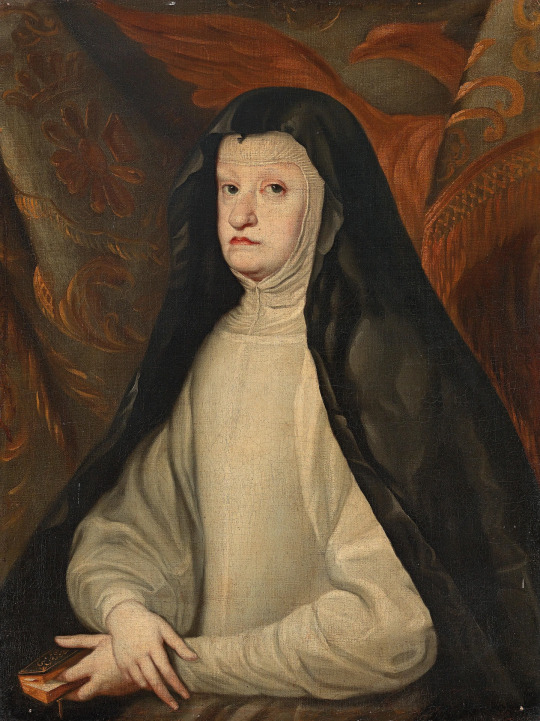
Reports of miracles attributed to her quickly began to circulate. These miracles and her body’s reported “incorruptibility” three years after her death led to a beatification proceeding in the last years of Carlos’s reign. Mariana’s path to sainthood, however, came to an abrupt end when the new dynasty, the Bourbons, took power. Both the beatification proceedings in 1698 and its abandonment in 1702 were as politically motivated as everything else in her life had been
I won't give too much information on her regency because there is a book about it called Queen, Mother, and Stateswoman Mariana of Austria and the government of Spain by Silvia Z. Mitchell. This book is my source about her and the reason why I made this blog so her side of the story will be known. Other sources are from https://governorshouselibrary.wordpress.com/2022/09/22/mariana-de-austria-the-queen-behind-the-castillo-de-san-marcos/?fbclid=IwY2xjawE5D5UBHUpP8HVhtFboR9ZThC2j5LNDLj531pKjmVxtGQbf7A2yMOo2AuNxqEU3Qw
youtube
I like 4 bourbons, Philip V, Luis I, Fernando VI, and Carlos III. If I had to choose one it would be Carlos III because he modernized Spain and imposed great reforms.
Sorry I took so long to reply
#mariana de austria#history#spain#habsburg#house of habsburg#I hate 19th century propaganda#charles ii of spain#carlos ii#justice for mariana de austria#Carlos imposed laws to protect natives and Mariana funded the Castillo de San Marco project#i hate the fact that her brilliant efforts where forgotten#monarquía española#spanish monarchy#monarchy#her story#felipe iv#my queen#Queen mother and stateswoman#book#marianas trench
40 notes
·
View notes
Note
Hello :)
I would like to know if you know who is behind the horrible false accusation against Marie Antoinette regarding her son. We know that Hébert presented the testimony in the revolutionary tribunal, and although he bears responsibility for it, I don't think he was alone in fabricating this false testimony.
While it is hard to know for sure exactly whose idea it was to make incest a charge against Marie-Antoinette, these are all the people involved in obtaining the information needed that I’ve been able to track:
When giving his testimony during Marie-Antoinette’s trial, Hébert claimed this ”fact” had been discovered by Antoine Simon, Louis-Charles’ caretaker in the Temple, who then told him, alongside mayor of Paris Jean-Nicolas Pache and prosecutor of the Paris Commune Pierre-Gaspard Chaumette, about it (cited in Histoire parlementaire de la Révolution française, volume 29, page 355-356):
…He (Hébert) adds that Simon having informed him that he had something important to communicate to him, he went to the Temple accompanied by the mayor and the prosecutor of the Commune. There they received a declaration from the young Capet, from which it was revealed that at the time of Louis Capet's flight to Varennes, La Fayette was one of those who had contributed the most to facilitating it; that for this purpose they had spent the night at the castle; that during their stay at the Temple, the inmates had continued for a long time to be informed of what was happening outside; that correspondence was sent to them in clothes and shoes. The little Capet named thirteen people as those who had partly cooperated in maintaining these intelligences, that one of them having locked him and his sister in a turret, he heard him telling his mother: I will get you the means of finding out the news by everyday sending a peddler to shout the evening newspaper nearby. Finally, young Capet, whose physical constitution each day was deteriorating, was discovered by Simon [while engaging] in indecent pollutions that were fatal to his temperament; that the latter having asked him who had taught him this criminal practice, he replied that it was to his mother and his aunt that he was indebted for the knowledge of this fatal habit. From the declaration, observes the deponent, that the young Capet made, in the presence of the mayor of Paris and the prosecutor of the Commune, it follows that these two women often made him sleep between the two of them, that he there committed acts of the most unbridled debauchery; that there was not even any doubt, from what fils Capet said, that there had been an incestuous act between mother and son. There is reason to believe that this criminal enjoyment was not dictated by pleasure, but rather by the political hope of annoying the physique of this child, who one still liked to believe was destined to occupy a throne, and whose morale one wanted by this maneuver to ensure the right to reign over while, by the efforts that one made him make, he remained attacked by a descent, for which it was necessary to put a bandage on this child; and ever since he no longer lives with his mother he has regained a robust and vigorous temperament.
The letter where Simon asks Hébert to come over to the Temple has been conserved and can be found cited in volume 1 of Histoire du tribunal révolutionnaire de Paris : avec le journal de ses actes (1880) by Henri Wallon:
The republican Simon to the patriot and damn patriotic Father Duchesne, The Temple, 30 September 1793, year II of the Republic one and indivisible Hello. Come quickly, my friend, I have things to tell you and would feel a lot of pleasure seeing you. Try to come today, you will always find in me a frank and brave republican.
Louis-Charles’ declaration, made on October 6 1793, can in its turn be found cited in Procès des Bourbons (1798). Besides Louis, Simon, Pache, Chaumette and Hébert, the document has been signed by Frery and Seguy, commissioners of the temple, Heousée, police administrator, and Laurant, council commissioner. According to The Dauphin (Louis XVII) (1921) by G. Lenotre, Louis-Charles’ signature is very clumsily written when compared to the handwriting in his schoolbooks, opening the door to the possibility his interrogators had threatened him or made him drunk in order to get him to put his name on the paper:
…He declared to them, furthermore, that having been surprised several times in his bed by Simon and his wife, charged with watching over him by the commune, committing indecency on himself that was harmful to his health, he admitted to them that he had been instructed in these very pernicious habits by his mother and his aunt, and that different times they had amused themselves by seeing him repeat the practices in front of them, and that very often this took place when they made him lie down between them. From the way the child explained himself, he made us understand that once his mother made him approach her; it resulted in copulation and a swelling in one of his testicles, as said by the citoyenne Simon, for which he wears a bandage, and that his mother recommended him to never speak of it: that this act had been repeated several times since.
In the same work we also find the interrogation held with Louis’ sister Marie-Thérèse-Charlotte the following day. She was then among other things asked ”if, when playing with her brother, he did not touch her where he didn’t get to touch her; if one didn’t make her brother jump on a blanket, and if his mother and aunt hadn’t made him sleep between them?” Thérèse responded with a no. The protocol then documents the following:
We immediately called for Charles Capet, and invited him to tell us if what he said yesterday, regarding the touching of his person, was true? [He] persisted in what he had said, repeated and maintained it in front of his sister, and persisted in saying that it was the truth. Asked a second time to state whether this was indeed true, he replied yes, it is true; his sister claimed to never have seen it.
This document is signed by Jacques-Louis David, Pache, Chaumette, Heussé, Laurent and Danjou. The same people plus one Séguy also signed the interrogation of Madame Élisabeth held the very same day. The childrens’ aunt was she too questioned about the incest:
Has she read Charles' statement, regarding the indecencies mentioned in the document, dated the 15th of this month? Responded that a similar infamy is too far below and too far away from her to be able to respond to it; that moreover the child had had this habit for a long time; and that he must remember that she and his mother scolded him for it several times. Charles was asked to explain on this subject: he attested that he had told the truth. She read the rest of Charles' statement on the same subject, in which he persisted, adding that he did not remember the times, but that it happened frequently. She said that as it only concerns her, she will not respond to it any more than to the rest; she believes that her conduct must protect her from suspicion. Charles asked to declare who had first instructed him in this practice. The two together. Did it happen during the day or during the night? He doesn’t remember, but he thinks it was in the morning.
The secretary who wrote the interrogations down was one Daujon. His colleague, the municipal officer Goret, wrote that he had told him the following about the incident (cited in The last days of Marie-Antoinette (1907) by G. Lenotre):
It was this same Daujon who was acting as secretary when the young prince was subjected, in the Temple, to an examination on the subject of the slanderous and infamous statements that had been circulated with in regards to the Queen. Here, word for word, is what Daujon told me on the subject of that examination, and I may say that I considered him a man worthy of belief. The young prince, he told me, was seated in an armchair, swinging his little legs; for his feet did not reach the ground. He was examined as to the statements in question, and was asked if they were true: he answered in the affirmative. Instantly Madame Elizabeth, who was present, cried out: ”Oh, the monster!” As for me, added Daujon, I could not regard this answer as coming from the child himself, for his air of uneasiness and his general bearing inclined me to believe that it was a suggestion emanating from someone else, — the effect of his fear of punishment or ill treatment, with which he may have been threatened if he failed to comply. I fancy that Madame Elizabeth cannot really have been deceived either, but that her surprise at the child's answer wrung that exclamation from her.
#french revolution#frev#hébert#marie-antoinette#louis xvii#jacques louis david#ask#the fact this was the last time thérèse and élisabeth ever saw louis is so damn dark 💀💀
37 notes
·
View notes
Photo

Michel de L'Hospital
Michel de L'Hospital (also known as L'Hôpital, c. 1505-1573) was a French statesman who served during the reigns of four kings – Francis I, Henry II, Francis II, and Charles IX – as Councillor of Parlement (1537), Chancellor of the Duchesse de Berry (1550), the first president of the Chamber of Accounts (1555), and Chancellor of France (1560-1568).
At a time when "one king, one law, one faith" was the almost unanimous opinion of French people, L'Hospital advanced the concept of the separation of the state and church to free France from unending religious conflicts. He considered freedom of conscience as the first condition of social peace and worked tirelessly for peace between competing confessions.
Early Life
Michel de L'Hospital was born in 1505 or 1506 in the small town of Aigueperse in Auvergne. His father Jean was attached to the service of Charles de Bourbon, Constable of France, and sent his son to Toulouse for his studies. He only spent two years at Toulouse, but the atmosphere of violence that characterized the Protestant Reformation in France influenced what became a lifelong commitment to oppose all forms of intolerance.
During this time, the fortunes of Michel's father Jean were reversed by the troubles of Charles III, Duke of Bourbon (l. 1490-1527), viewed as a rival by King Francis I of France (r. 1515-1547). Bourbon was accused of a treasonous alliance with Charles V, Holy Roman Emperor (l. 1500-1558). Jean was viewed as Bourbon's accomplice, leading to the confiscation of his property and Michel's arrest at Toulouse. Once released, he left for Italy to join his father in Milan. Jean lost everything at his patron's death when Charles de Bourbon was killed during the siege of Rome in 1527. Michel and his father went to Rome where Cardinal de Grammont persuaded both men to return to France. Michel's father was unable to recuperate his lands and left for Lorraine, where he died. In 1537, Michel married Marie Morin, the daughter of a high court official, the lieutenant-criminel of the Châtelet, with whom he had three daughters, and became a councillor in Parlement as part of the dowry.
Continue reading...
17 notes
·
View notes
Text
What perfume/cologne would the Van Der Linde gang wear



hi!! this is my first tumblr post, and i don’t exactly know how to do this or work the app, so forgive me if this is horribly worded or confusing.
anyways, this is my opinion on what colognes or perfumes the gang would wear. horses and cain included, since they are technically a member of the gang!!
Abigail -
something woodsy, maybe like the forest or a campfire, cedar wood, trees, plants.
examples:
- G-Water
- Tam Dao
- Snoqualine
Arthur -
tobacco, scent of alcohol, mud, outdoors.
examples:
- Jasmin et Cigarette
- Rien
- Earthworm
Baylock -
ashes, grease.
examples:
- Tobacco Blaze
- Garage
- La Yuquam Homme
Bill -
any popular male fragrances, or like gunpowder and fire.
examples:
- 9mm Ballistic Therapy
- High Noon
- Campfire Nights
Boaz -
dynamite, money.
examples:
- Wall Street
- Don Xerjoff
- 1805 Tonnerre BeauFort London
Branwen -
oatcakes, apples, water.
examples:
- Lostmarch Lann-Ael
- Be Delicious
- Cavalli Acqua
Bob -
blood, gunpowder, sweat.
examples:
- Vena Cava
- Richard Dark Side
- Secretions Magnefique
Brown Jack
pomade, alcohol, blood.
examples:
- Classic Fragrance
- Heeley Agarwood
- Molotov Cocktail
Cain -
dog, mud, grass.
examples:
- La Panthere Edition Soir
- Grass
- Zoologist Bat
Charles -
light florals, nature, clean fur.
examples:
- Coach Floral
- Super Cedar
- Coyote
Dutch -
blood, metal, tears.
examples:
- Vassago
- Spacewalk
- Rainy Season of Dresden
Davey -
snow, wood, fire.
examples:
- Waltz of the Snowflakes
- Tobacco Vanille
- Inquisitor
Enis -
whiskey, beer, grass.
examples:
- Tom Oud
- Stout ‘n Smoke
- Dune Road
Grimshaw -
sulfur, metal, cinnamon.
examples:
- Bloody Smoke
- Vanille Absolu
- Jupiter
Gwydion -
birds, leather, salt.
examples:
- Seemannn
- Black Saffron
- Millésime Impérial
Hosea -
moonshine, stew, metal.
examples:
- Moscow Mule
- Starfish & Coffee
- Santal 33
Jack -
water, horse, corn oil.
examples:
- Petrichor
- Cuir de Russie
- Seems Legit
Javier -
mahogany, cotton, musk.
examples:
- Redwood Leaves
- Lazy Sunday Morning
- Urban Musk
Jenny -
snow, wool, wood.
examples:
- Redwood Mist
- Battaniye
- Grey Vetiver
John -
sweat, musk, grease
examples:
- Flores Negras
- Silver Musk
- Cristina La Veneno Ni Puta Ni Santa
Kieran -
blood, grass, oats.
examples:
- Hora de la Verdad Sombra
- Figuier Eden
- Harran
Karen -
beer, guns, whiskey.
examples:
- Beguile
- Wicked John
- Kutay
Lenny -
blood, books, bullets.
examples:
- Seems Legit
- Diamonitirion - elixir atonit
- Moon Child
Mac -
metal, bullets, kerosene.
examples:
- Craft
- Iron Duke
- Nuvolari Rubini
Maggie -
dirt, stone, bog.
examples:
- Le Sillage Blanc
- During the Rain
- Swamp elixir
Mary-Beth -
books, ink, gold.
examples:
- Bibliophilia: Love of Books
- Supreme Vanilla
- Royal Blood
Micah -
rot, corn, mold.
examples:
- Saint Louis Cemetery #1
- Funerie
- French Kiss
Molly -
roses, grass, trees.
examples:
- Roses Musk
- Leila Lou
- Colors de Benetton
Nell II -
sweat, cows, pig.
examples:
- Amyi 3.17
- Cuir de Russie
- Hyrax
Old Belle -
carrots, beer, hay.
examples:
- Carotte
- Sónar
- Basilico & Fellini
Old Boy -
musk, tears, cow.
examples:
- Another 13
- Ozone
- Osmanthus
Pearson -
meat, vegetables, crawfish.
examples:
- Gino: Steak Scented Eau de Parfum
- Eau de Cuisine
- Wild Carrot Oud
Reverend -
whiskey, incense, coffee.
examples:
- 7 Loewe
- Bourbon e Fava Tonka
- Black Opium
Sadie -
blood, tears, gunpowder.
examples:
- Bull’s Blood 2nd Edition
- Cool Glacier
- Rendez-Vous!
Sean -
whiskey, sweat, bullets.
examples:
- Malt Akro
- Monochrome
- Amour Nocturne
Silver Dollar -
fire, wool, metal.
examples:
- Encens Pyro
- The Sheepfold, Moonlight
- Rosenrot
Taima -
deer, blood, meat.
examples:
- Ma Bete
- Trinity Blood
- Good Girl Gone Bad
The Count -
sugarcubes, peaches, pears.
examples:
- Pixie Dust
- Allure Eau de Parfum
- First Base
Trelawny -
doves, rabbits, silk.
examples:
- Ruğa Sablo
- Wet Garden
- Baklava Musk
Tilly -
bullets, baby powder, swamps.
examples:
- 266ts Pontiff’s Harley
- Cashmere Mist Eau de Toilette
- Haxan
Uncle -
manure, horse, cow.
examples:
- D’zing
- L’heure Fougueuse
- Zoologist Cow
again, this is my first post so i’m very sorry about it being bad or isn’t looking right for tumblr. so sorry.
#rdr2#van der linde gang#arthur morgan#john marston#dutch van der linde#hosea matthews#micah bell#red dead redemption 2
25 notes
·
View notes
Text

Portrait of Charles of Bourbon
Artist: Jean Ranc (French, 1674–1735)
Title: El infante Carlos de Borbón (Futuro Carlos III de España)
Date: 1725
Medium: Oil on Canvas
Collection: Royal Palace of Madrid, Madrid, Spain
Charles III of Spain
Charles III of Spain ( Madrid , 20 January 1716 – Madrid, 14 December 1788), called " the Politician " or " the Best Mayor of Madrid ", was King of Spain from 1759 until his death in 1788; Duke of Parma and Piacenza —as Charles I— between 1731 and 1735; and King of Naples —as Charles VII— and of Sicily —as Charles V— between 1734 and 1759.
Carlos was the third son of Philip V to reach adulthood and the first he had with his second wife, Isabel Farnesio , so it was his half-brothers Luis I and Fernando VI who initially succeeded their father. Their death without issue would lead to Carlos occupying the Spanish throne.
Charles served the family policy as a piece in the struggle to regain Spanish influence in Italy: he initially inherited the duchies of Parma and Piacenza from his mother in 1731; but later, when Philip V reconquered the Kingdom of Naples and Sicily in the course of the War of the Polish Succession (1733–38), he became king of those territories under the name of Charles VII. He married in 1738 Maria Amalia of Saxony , daughter of Frederick Augustus II , Duke of Saxony and Lithuania and King of Poland .
#portrait#charles of bourbon#charles iii#spanish king#18th century painting#french painter#european#oil on canvas#spanish culture#history#costume#adolescent#wig
9 notes
·
View notes
Text


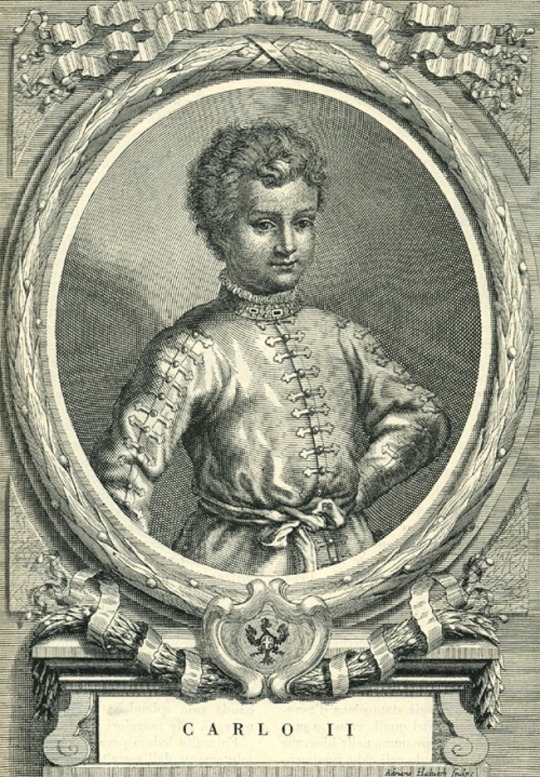







Royal Birthdays for today, June 23rd:
Ptolemy XV Philopator Philometor Caesar, Pharaoh of Egypt, 47 B.C.
Margaret of Denmark, Queen of Scotland, 1456
Charles II, Duke of Savoy, 1489
Shah Shuja, Mughal Prince, 1616
Marie Leszczyńska, Queen of France, 1703
Joséphine de Beauharnais, Empress of the French, 1763
Edward VIII, King of the United Kingdom, 1894
Tribhuhvan Bir Bikram Shah, King of Nepal, 1906
Maria Carolina of Bourbon-Parma, Marchioness of Sala, 1974
Maria-Carolina of Bourbon-Two Sicilies, Duchess of Palermo, 2003
#caesarion#Marie Leszczyńska#josephine de beauharnais#margaret of denmark#charles ii#Shah Shuja#edward viii#Tribhuh#van Bir Bikram Shah#Maria Carolina of Bourbon-Parma#Maria-Carolina of Bourbon-Two Sicilies#royal birthdays#long live the queue
5 notes
·
View notes
Text
They cancelled The Serpent Queen and I am so fucking mad!!
I'm french and guess where do I live? In the Loire Valley!! My hometown, Vendôme, is where The House of Bourbon (the one we see in the show) is from. Their full name is actually de Bourdon-Vendôme, because there are three different branches and if we only mention "Bourbon", it's kind of confusing because we don't know which branch we speak of and Bourbon-Vendôme is the one Henri IV is from. Which means, the character that we see in the show lived in the castle located next to my elementary school! I was young but I can still see and hear my teacher telling my class "This castle next to us was a big deal.". Henri IV didn't live here but he came a few times, especially when his mother, Jeanne d'Albret, died and was buried here (along with Antoine and their first born son (and Louis, Antoine's brother)). So when Jeanne died in the show, in the story, they technically should have been in my hometown (and Antoine and Louis should have been already dead lol). Same as when Antoine and Louis went back home to their dads. François I, François II, Marie Stuart, Charles IX and Catherine came here. Sadly, the castle is just ruins now... But it makes me sad that they never mentioned the name of the town once. Even Reign mentioned it. I mean, everyone knows that Reign was more fiction than facts but still, they mentioned Vendôme in one of the latest episodes of the show and it's still one of my proudest moment 🥹
Since I live in Vendôme, it means that I live 30 min away from le Château de Chambord, where they filmed most of the show. I love going there whenever I can but sadly, I never got the chance to go there when they were filming... 💔 It was weird and funny to see how they edited the outsides of the castle. Some editing didn't make any sense but I get it. Also, the big gardens are from a completely different castle located in Villandry. So it was weird to see Chambord edited in the background. And it didn't make any sense when we would see Chambord fully and the gardens weren't there, haha.
Also, le Château d'Amboise was used two times and they kinda disrespected it 😅 I'm not entirely serious when I say this but I kinda I am. The first time is in the season one finale, when Mary "arrives" in Scotland. The second that I saw the location I said "Oh, Amboise" and then I saw the ocean next to it and realised that it was supposed to be Scotland 😭 The second time was in season two when Catherine visits Diane (who is still pretty young and most importantly, miraculously still alive in 1572 😭). When Diane and Catherine talk we discover that they are in "Anet" (where she died in 1566). I was so happy when they mentioned where they were in the story but I was like "but, but, it's Amboise, guys 😭". It's funny and confusing for me because I know those castles but it's perfectly fine for an audience who has no clue. Also, le Château d'Anet is a private property, so I don't know if they would have allowed the show to come and filmed there, but also I've seen a documentary a few months ago and the owner seems very sweet, so I don't know. They also used Amboise, the town, to be Paris, where Catherine's brother was supposed to build le Palais des Tuileries.
And last but not least, I wanna talk about Blois (20 min away from me, next to Chambord) Oooh, Blois is probably my biggest heartbreak from that show. In season one, it made sense to be in Chambord because this castle was François I's baby but he lived there for only a month. Henri II didn't live there but kept the constructions going. When Henri II died, François II didn't live there. Charles IX didn't live there either but just like his father before him, he kept the constructions going and consolidated it. Henri III and Henri IV didn't live there and didn't do anything to it (it's such an Anjou and Henri behavior if you ask me haha). But if Henri II, François II, Charles IX and Henri III didn't live there, then where did they live, you ask?! Well, they lived in BLOIS. Which means that the whole show should have been happening in le Château de Blois, not Chambord. Y'all have no idea how excited I was when I heard that season 2 was filming in Blois. I thought, finally, they are going to aknowledge the most important castle of the Valois! I mean they actually all lived there and this is where Catherine died!! When I say that that castle is important to the Valois' story, it's because it is. Do I need to tell you how disappointed I was when I saw season 2 last week? A) I was expecting multiple scenes in the castle and well, that didn't happen. B) I had to wait the very last episode to see what they filmed there. C) THEY DIDN'T EVEN FILMED IN THE CASTLE!!! We see all the Protestants walking across the bridge, we see a few streets that I'm not even sure if it's actually Blois and then we see the castle, in the background, behind all the protestants who are looking at a cathedral that is not even located there. THEY EDITED THE CATHEDRAL OF TOURS IN BLOIS 😭 It's not fair. Honestly, all the editing stuff didn't really bother me. I understand that they did whatever they needed to for the aesthetic of the show. But not mentioning once the name of the town that was important to the true Valois Kings and Queens is something that I truly don't understand.
The show is about the French history, is filmed in France and guess what? We had NO WHERE TO WATCH IT IN FRANCE. The show arrived like a week ago on Max and it's been n°5 in the top 10 since then. French people want to see their country in a show and support it, we have the proof and THEY CANCEL IT?! I am so upset. They could have give it a third and last season to wrap it up. Season 2 was so much better than season 1. The Valois siblings did bring so much more depth, especially Anjou.
I CAN'T BELIEVE THAT I'M LOSING KING ANJOU. The potential that he had was insane.
Okay, I'm gonna shut up now and cry about it 😭
10 notes
·
View notes
Text









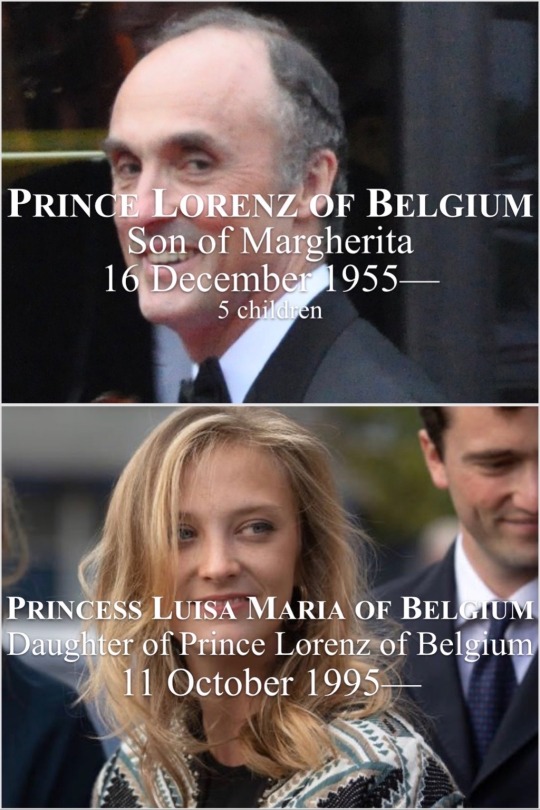
Descendants of the Tudors
#descendants of the tudors#henry vii#margaret tudor#james v#mary queen of scots#james vi and i#elizabeth stuart#charles i louis#elizabeth charlotte madame palatine#philippe ii duke of orléans#charlotte aglaé d’orléans#maria teresa felicitas d’este#louise marie adélaïde de bourbon#louis philippe i#ferdinand philippe duke of orléans#prince philippe count of paris#princess hélène of orléans#margherita archduchess of austria este#prince amedeo duke of aosta#prince lorenz#princess luisa maria
2 notes
·
View notes